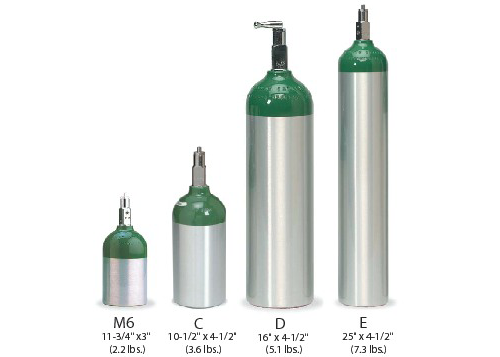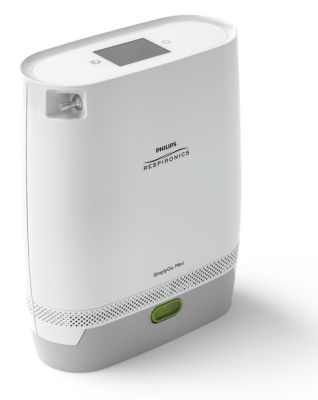The Main Principles Of Oxygen Tanks
Wiki Article
The Definitive Guide for Oxygen Tanks
Table of ContentsThe Only Guide for Oxygen Tanks10 Easy Facts About Oxygen Tanks DescribedFacts About Oxygen Tanks UncoveredThe Greatest Guide To Oxygen TanksOxygen Tanks Things To Know Before You BuyNot known Factual Statements About Oxygen Tanks
Clinical oxygen is made use of for particular functions, whereas industrial oxygen is used for a variety of objectives. People who are not able to offer their own oxygen will certainly benefit from oxygen treatment.We breathe in oxygen, which is a gas airborne. Individuals with breathing conditions, on the various other hand, might not have the ability to obtain sufficient oxygen on their very own. They may likewise call for oxygen therapy or supplementary oxygen if they need it. Oxygen treatment has been shown to boost energy degrees as well as sleep for a number of individuals.
You can access to the oxygen you require by using a CPAP equipment. What are the dangers of not providing oxygen to a person? Because of this, if the patient does not get oxygen, they will most likely die and need a transplant. A non-cardiovascular reason is also most likely to lead to fatality.
The 9-Minute Rule for Oxygen Tanks
For integrated systems to link to an EDS system, an inline, decreasing regulator is needed. This connects to the onboard oxygen supply and reduces the pressure so that it meets the pressure requirements of the EDS.Obtain the most recent regulatory info, certification news and also unique discounts!
Putting clients on oxygen is just one of the simplest as well as most reliable interventions made use of to maintain a substantial variety of clinical problems. This area will assess the different gadgets made use of to provide and also carry oxygen and also exactly how you may pick one over the various other based on patient discussion. Portable oxygen cylinders are one of the most usual form of oxygen available in the field.
The Definitive Guide to Oxygen Tanks
The oxygen cylinders created for medical usage are developed to permit just medical-grade regulators to be connected-- as well as only in one setup. The impressions on the cylinder compare with pins on the regulator as well as permit smooth and limited connection when secured to the cyndrical tube To link a regulatory authority to a cyndrical tube; If existing, get rid of the plastic cap on the cyndrical tube.Line up the pins and imprints existing on the cylinder and also regulatory authority. Safeguard the screw device on the regulator until it is tight and also there is no motion in between the regulator and also cylinder. Ensure the regulator is in the off setting, take the oxygen-cylinder wrench and also turn the cyndrical tube on, then rapidly transform it withdraw.
If no running away air is observed, transform the cyndrical tube back on as well as evaluate the regulator by turning it to a chosen flow rate. The pressure indicator on the regulatory authority shows the inner pressure of the oxygen cyndrical tube. Constantly make sure to protect put together oxygen cyndrical tubes in any way times and also do not leave them in need of support in upright positions where they might drop.
The Oxygen Tanks Ideas
Oxygen is highly combustible and also need to never be used or stored near an open flame. The primary look what i found oxygen distribution gadgets that you will come across are the,, and. and also the. Each of these has various usages and also various limitations, click here for more info the choice of which to use will greatly depend upon the nature of the client you are caring for.The NC must be positioned on the patient with the prongs bending up into the nares, the tubing covered over the person's ears (or secured to the tubing holders on a C-collar), and afterwards tightened as much as the chin with the moving system. Ensure to connect the various other end of the tubing to the oxygen regulatory authority and also set the desired circulation rate.

The Best Guide To Oxygen Tanks
They have the advantage of supplying almost 100% Fi, O2; this is often reduced as a result of the variable fit of the mask on the patient's face. To place an NRB on a person, initially, attach the tubes to the oxygen regulator and show up the circulation to the wanted rate (at a minimum of 10 LPM).
This is a method of developing an intermediate distribution method in between the NRB and also the nasal cannula in ambulances that do not bring facemasks alone. The signs and contraindications are otherwise the very same as for NRB masks, as are the issues. The treatment for placing a partial NRB coincides as the positioning of an NRB, with the removal of one of the internal flaps which enables exhalation of expired CO2.
Indicators on Oxygen Tanks You Need To Know
Next off, eliminate among the bands from the mask as well as secure it around the posterior neck of the individual attaching it back sideways it belongs. Area the mask top article over the airway and secure the mask snuggly to the person. Tracheostomy masks are consider this the very same thing as an NRB simply for patients that have a tracheostomy-- and also are suggested in patients with a tracheostomy who require supplemental oxygen.of tracheostomy masks include irritation of the tracheostomy site, dry skin of the mucous membrane layers, as well as retention of carbon dioxide. Get rid of the strap from one side as well as area the mask over the stoma. Protect the strap around the individual's posterior neck as well as reconnect to the opposite of the mask. Connect the opposite end of the tubes to the oxygen regulatory authority.
Report this wiki page